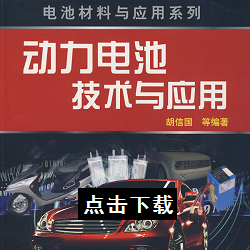
德國工程師開發了新的傳感器技術,可以降低電動車(EV)和其他類型的鋰離子電池的重量和成本。
菲利普·多斯特是波鴻魯爾大學的電力系統技術和電力機電一體化研究團隊的一員,該團隊開發了一個新的概念,用于監測電池的電流和電壓,可以減少電池的技術負擔,以及添加新的功能。
通常,EV電池由可包含多達12個電池的單個電池組成,每個電池由其自身的電壓傳感器監控。傳感器對于監測電池的鋰電池很重要,如果它們過熱或過度工作,則有可能燃燒起火。
在典型的EV電池中,有一個電流傳感器和多個電壓傳感器來做這項工作,Dost說。 “EV電池中,傳感器是一個相當大的重量和成本驅動器。”

▲電動車輛電池可能會變得更輕,更便宜,這得益于在德國波鴻魯汶大學康斯坦丁諾斯Sourkounis教授(左)的指導下,由工程學生Philip Dost(右)組成的團隊開發的新傳感器技術。 (來源:Ruhr-UniversitätBochum)
為了減少一些這種重量,Dost和他的同事們提出了一種方法將此前EV電池需要監測電流和電壓的傳感器數量降低為一個,而不管電池具有多少個單體。傳感器還可以提供通常作為單獨的技術組件 – 來實現EV電池中的電池均衡。這個功能確保電池中的能量被均勻地重新分配。
電池均衡對于維持EV電池的最大能量產出是至關重要的,特別是當它們老化時,Dost說。每個電池在充電和放電期間不同地反應,使得在過程結束時,一些電池比其它電池更多地充電。但是一旦一個電池完全充電,其他電池的充電停止,這可能導致電池的劣化,如果存在能量分布的不平衡。電池平衡功能可以反作用這個過程,并保持甚至更低的電池工作效率,他說。
研究人員說,該團隊開發的傳感器系統可以擴展到具有不同數量細胞的電池中。它還可以應用于其他電池類型,如平板電腦或筆記本電腦,無線電動工具,不間斷電源系統和太陽能儲能系統,以減少其重量和成本,并提高電池的使用壽命。
Dost的同行Florian Langner在他的大學電力系統技術和電力機電研究所的碩士論文中開發了傳感器的原型 - 它很快就要進入商業化的道路。 “一些工業企業已經表達了對我們的創新的興趣,” Dost說。
魯爾大學的工程師們將繼續努力改進技術,更密切地評估他們的原型和更換單個部件,以滿足汽車行業的要求,Dost補充說。
原文鏈接:
Engineers in Germany have developed new sensor technology that could reduce both the weight and cost of electric-vehicle (EV) and other types of lithium-ion batteries.
Philip Dost, who is studying power-systems technology and power mechatronics at Ruhr-Universität Bochum, is part of a team that’s developed a new concept for the sensors that monitor the current and voltage of EV batteries that can reduce the technological burden of the batteries, as well as add new functionality.
Typically EV batteries are comprised of individual blocks that can contain up to 12 cells, each monitored by its own voltage sensor. The sensors are important to monitor the lithium cells of the battery, which have the potential to be flammable if they overheat or are overworked.
In typical EV batteries, there is a current sensor and a number of voltage sensors to do this work, Dost said. “Just like the cells, the sensors are a considerable weight and cost driver,” he said.
To reduce some of this burden, Dost and his colleagues have come up with a way to reduce the amount of sensors an EV battery needs to one each for current and voltage, regardless of the number of cells the battery have. The sensors also can serve an additional function that typically is present in an EV battery as a separate technology component—cell balancing. This function ensures that the energy in a cell is redistributed evenly, he said.
Cell balancing is critical to maintaining the maximum energy yield of EV batteries, especially as they age, Dost said. Each cell reacts differently during charging and discharging so that by the end of the process, some are more charged than others. But once one cell is fully charged, charging of the other cells stops, which could cause degradation in the battery if there is an imbalance of energy distribution. The cell-balancing function can counter-act this process and keep even older batteries working efficiently, he said.
The sensor system developed by the team can scale for deployment in batteries with a varied number of cells, researchers said. It also can be applied to other battery types—such as tablets or laptops, wireless electrical tools, uninterruptible power-supply systems, and solar-energy storage systems—also to reduce their weight and cost and improve the batteries’ longevity.
Dost’s fellow research Florian Langner developed a prototype of the sensors-- which could soon be on their way to commercialization--in his master’s thesis at the university’s Institute of Power System Technology and Power Mechatronics. “Some industrial enterprises have already expressed their interest in our innovation,” Dost said.
The Ruhr-Universität engineers will continue their work to improve the technology by more closely evaluating their prototype and replacing individual components to meet the requirements of the automotive industry, he added.





